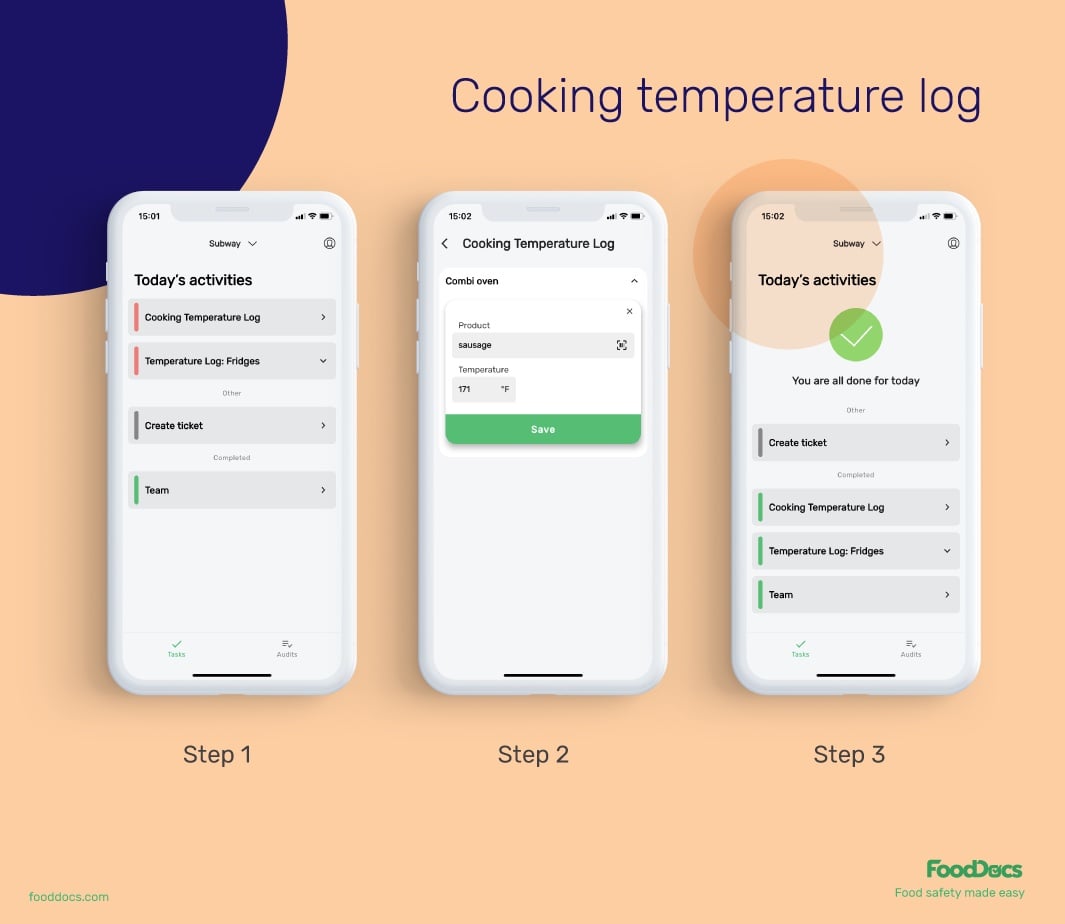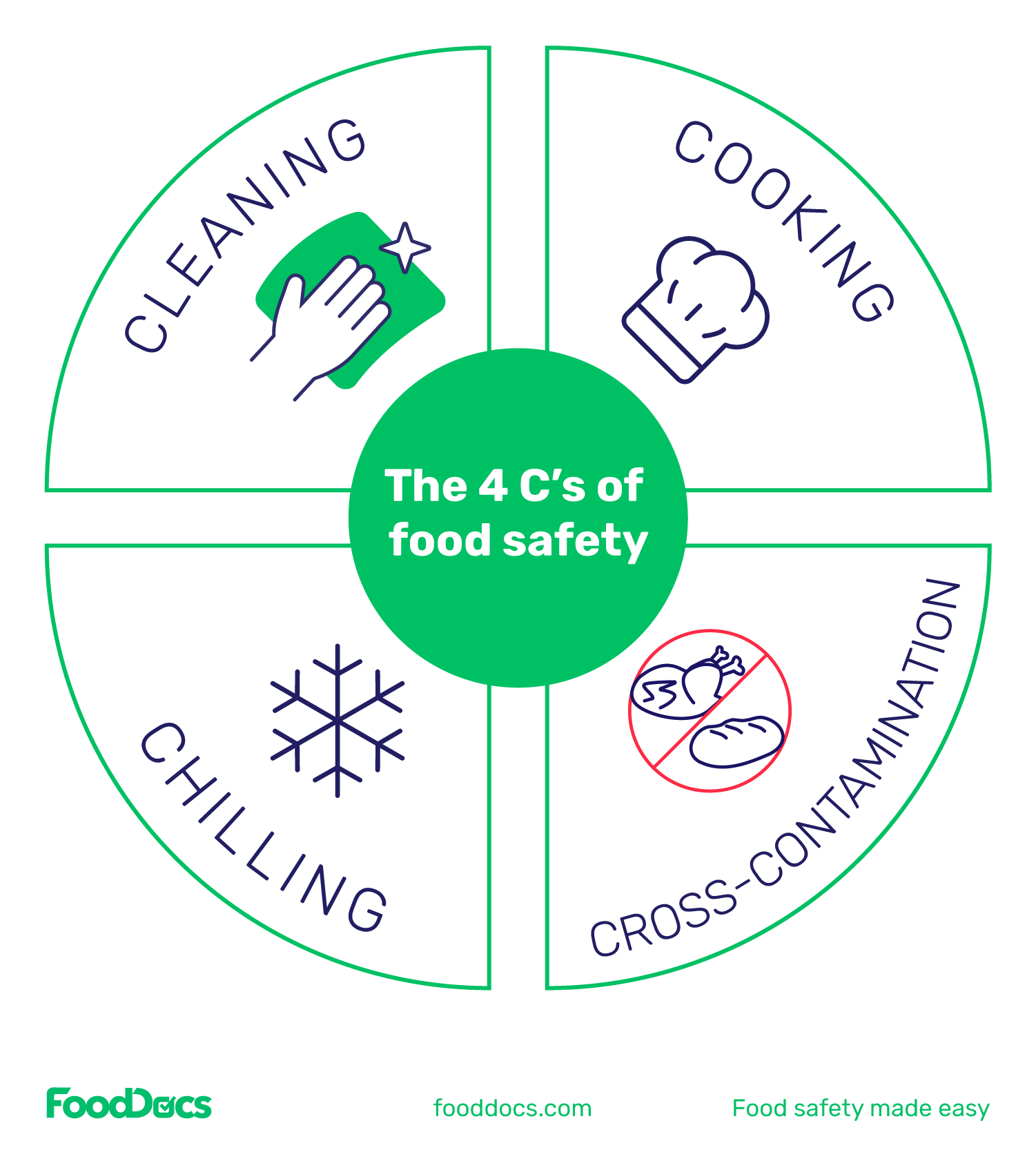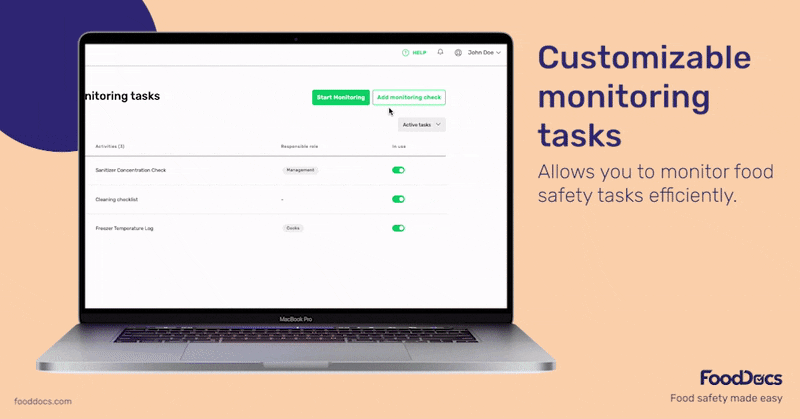Why Is Food Safety Important In Healthcare? Healthcare Leaders Guide
Learn challenges healthcare foodservice teams face today and key food safety practices to protect vulnerable patients. Get a free healthcare leader...
Discover the ins and outs of nursing home kitchen regulations in this in-depth guide.
As a nursing home kitchen staff member — whether you're a cook, kitchen or dietary manager, or supervisor — you appreciate the weight of nursing home kitchen regulations more than the average person and know just how important they are for keeping elderly residents safe.
That's half the battle. The other half is ensuring that you and your team comply with the nursing home kitchen regulations, which you'll be even more confident in by the end of this article.
WHAT WE'LL COVER:
Before jumping into the regulatory details of nursing home kitchens and food, let's set the stage with some food-related nursing home statistics courtesy of Long Term Care Community Coalition's LTC Journal:
(Note: The board at FairWarning, an investigative news organization with an emphasis on public health, dissolved the charitable nonprofit in February 2021.)
Those eye-opening nursing home stats go to show why nursing homes and the teams running them must hold themselves to such high standards. They're arguably working with the most vulnerable and at-risk population, which is why they need to more effectively and consistently uphold nursing home food regulations.

Following simple yet critical food safety practices goes a long way to keeping nursing home kitchens safe and protecting the residents they serve. Inspired by the 4 C's of food safety, nursing home kitchens should implement systems to ensure:
Compared to assisted living and independent living, nursing home residents require higher degrees of medical attention across the board. Especially with activities such as taking baths or showers, getting dressed, taking medications and, of course, feeding. All the more reason to stay on top of regular cleaning procedures.
In the context of nursing home kitchens, cleaning applies to:
A benefit of working in a nursing home kitchen is that your numbers, dining requirements, and dietary care plans are consistent. Kitchen staff know what to expect. Even the guest visiting are usually accounted for, which means cooks can stay alert and focused on proper cooking.
Cooking reduces the initial microbial load of foods to safe and edible levels by killing target pathogens. Ensure kitchen staff does this consistently by:

Digitalize your cooking temperature log with FoodDocs.
Chilling will keep food safety hazards at bay for both raw and cooked foods because it slows down pathogen reproduction. Cold food safety practices that nursing home kitchen staff need to consider are:
One of the quickest ways that pathogens and foodborne illnesses spread is through cross contamination. This typically happens in one of three ways: food to food, equipment to food, and people to food.
If your nursing home kitchen staff are not adhering to the safe food handling practices above, the chances of cross-contamination are high.
Thankfully, there are practical things the whole nursing home kitchen team can do to prevent cross-contamination:

The Centers for Medicare and Medicaid Services (CMS) State Operations Manual is 863 pages. That's a whole lot of pages and we're aware there's only so much time in a day. However, we encourage you to check it out for yourself.
In the following section, you'll find the most important aspects of the CMS State Operations Manual that relate to nursing home kitchen regulations. The following paragraphs will not explore the intricacies of meeting every resident’s individual food preferences, accommodating nutritional needs, or how to support their nutritional well-being while respecting an individual’s right to make choices about his or her diet. We cover those things and more in CMS dietary regulations for nursing homes.
Our goal is to present the guidelines in a simplified way and provide practical information that will help alleviate some of your day-to-day stress.
If the nursing home does not have a qualified dietician or professional who isn't clinically qualified, the facility needs to designate someone to serve as a director of food and nutrition services. A few people could qualify for this position, including someone who:
The nursing home facility must:
"When writing SOPs for this scenario, remember that the facility did not make this food, nor did it transport this food to the facility for the resident; therefore, the facility’s primary concern should be to not only protect the resident, but to safeguard other residents from potential contamination as well. Setting ‘rules’ in a residential care setting such as a nursing home can be tricky, as we don’t want to stifle the free will and rights of residents, but we do want to protect them from potential harm when we can."

Safe food receiving and storage procedures are paramount. Food service staff must:
A note on state-specific laws: While this article doesn't cover specific state requirements, there are similarities across the board. But be sure to inquire about state-specific food safety regulatory laws to keep your facility operating legally.
As a nursing home, your food safety standards are far stricter — and rightly so. You continue to support a highly vulnerable and susceptible demographic.
FoodDocs understands this and has created a powerful smart food safety monitoring software. It allows you to:

Food System Safety Set Up with a web and mobile app in FoodDocs.
You can do all that (and more!) through a smart food safety system created by experts.
Say goodbye to sheets of paper, lost pens, and clunky clipboards.
Say hello to a sleek, easy-to-use app that will put +20% more time back in your day so you can focus on what matters most — providing high-quality care for your nursing home residents.
Yes, you can reheat food in a nursing home. Just make sure that kitchen staff reheats them again to 74°C (165°F). Discard the leftovers if they've been exposed for more than two hours to unsafe temperatures or the temperature danger zone (40°F to 140°F (5°C to 60°C) for more than two hours, discard them.
It's advised that nursing homes not serve the following foods to their residents:
Nursing homes should include protein-rich meals on their menus. They promote the creation and maintenance of muscle mass, stronger immunity, and improved heart function. This is not an exhaustive list, but foods you should include are:
Some of the most important things kitchen staff should not do while handling, preparing, and cooking food are:
Some of the most important things kitchen staff should do while handling, preparing, and cooking food are:
Nursing home kitchens should never serve rare hamburger due to the high risk of causing foodborne illness. Because nursing home residents can have compromised immune systems, they may not be able to survive a bout of food poisoning caused by harmful bacteria like E. coli.
Learn challenges healthcare foodservice teams face today and key food safety practices to protect vulnerable patients. Get a free healthcare leader...
Learn what Standard Operating Procedures (SOPs) are and how to write effective SOPs that ensure consistency, efficiency, and safety in your...
Boost your retail food safety with essential practices and digital tools to protect customers and your brand. Plus a free Retail Food Safety Leader...